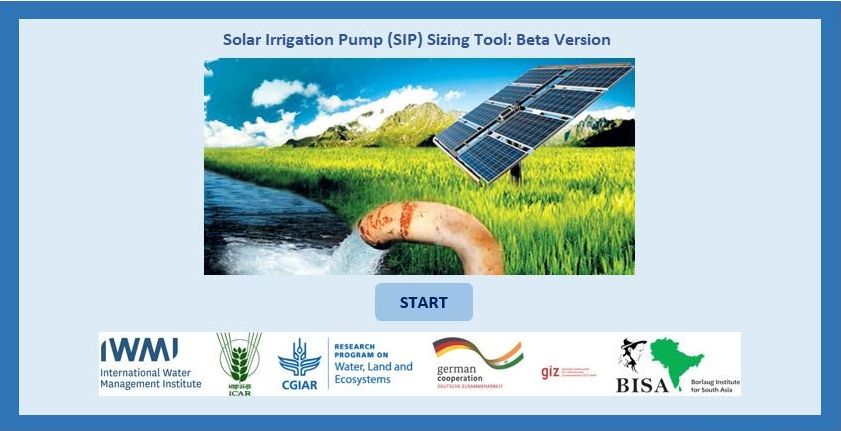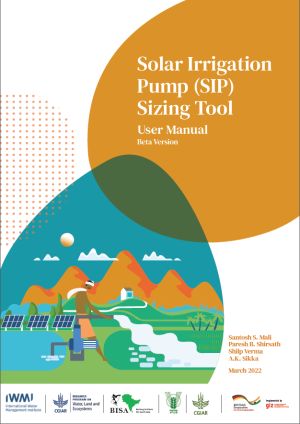IWMI-ICAR-BISA
Beta Version
By offering 1400-2200 hours of reliable, zero marginal cost, green energy for pumping, solar irrigation pumps (SIP) can be a godsend for farmers, especially those faced with rising diesel prices and unreliable farm power supply. It is not surprising then that Indian farmers have taken to solar pumps with much enthusiasm. Thanks to a supportive policy environment and significant reduction in unit prices, the number of SIP has crossed 350,00 in the last decade. Government of India’s ambitious agri-solarization campaign, PM-KUSUM (Pradhan Mantri Kisan Urja Suraksha evam Utthaan Mahabhiyan), will support deployment of more than 3.5 million SIPs in the coming years. This can help significantly expand irrigated area; make irrigation more affordable and accessible for smallholders; reduce pressure on electricity utilities to supply subsidised farm power; eliminate pump irrigation’s carbon footprint; and improve the overall returns from agriculture.
The design of SIP is based on scientific protocols therefore has a key role in large-scale solarization of Indian agriculture. Proper sizing of SIPs is a key component of design and is challenging, not least because farmers’ demand for energy for irrigation is a complex, derived demand. Scientific sizing of SIP involves a set of complex algorithms, each addressing a specific module in the design procedure. Several technical, biophysical and social factors govern the pump set size, which needs to be properly accounted while designing a matching solar pumping system.
In 2020, Deutsche Gesellschaft für Internationale Zusammenarbeit (GIZ) India and the Ministry of New and Renewable Energy (MNRE), Government of India, invited the International Water Management Institute (IWMI) to develop a decision support tool that can help in ‘right-sizing’ of solar pumps, particularly those that would be supported by MNRE through PM-KUSUM. IWMI leveraged its strong partnership with the Indian Council for Agricultural Research (ICAR) and the Borlaug Institute for South Asia (BISA) to jointly develop the tool.
The Beta version of the SIP Sizing Tool and a detailed User Manual is provided here for wider use and application. The MS Excel-based tool is aimed at assisting researchers, technical personnel, farmers and policy makers involved in adoption and promotion of solar pumping systems across India. The tool has universal applicability and uses nationwide datasets on climate, soils and crops, wherein users can fetch the required data for the location of interest or input their own data to get custom results.
The tool is comprised of four modules viz. crop water requirement module, discharge estimation module, head loss estimation module and the pump selection module which works on the principles laid down by MNRE. The accompanying technical user manual is designed to offer basic information about solar pump sizing and to provide the step-by-step procedure to work with the tool to solve real-world problems. This manual is divided in two parts. The first part explains the basic concepts and procedures in solar pump designing while the second part deals with the step-by-step procedure to use the MS Excel-based Beta version.
This Beta version has been extensively shared with solar pump manufacturers, industry experts and state nodal agencies of PM-KUSUM during several consultations and training sessions co-organized by IWMI and ICAR with GIZ and MNRE. During these, the tool received positive feedback and useful suggestions for improvement. Going forward, a mobile version of the tool is being developed by GIZ and MNRE. IWMI and ICAR have reiterated their commitment to support mobile version development as well as development of future versions of the tool based on user inputs and feedback. IWMI has also received interest from several agencies including GIZ Nepal, the International Solar Alliance (ISA) and the Asian Development Bank (ADB) to develop similar tools for other countries in Asia and Africa.
For more information, contact:
Shilp Verma
Senior Researcher, IWMI
shilp.verma@cgiar.org



